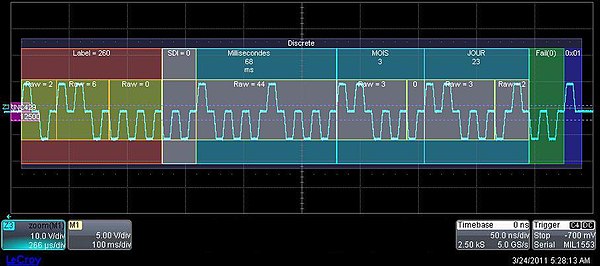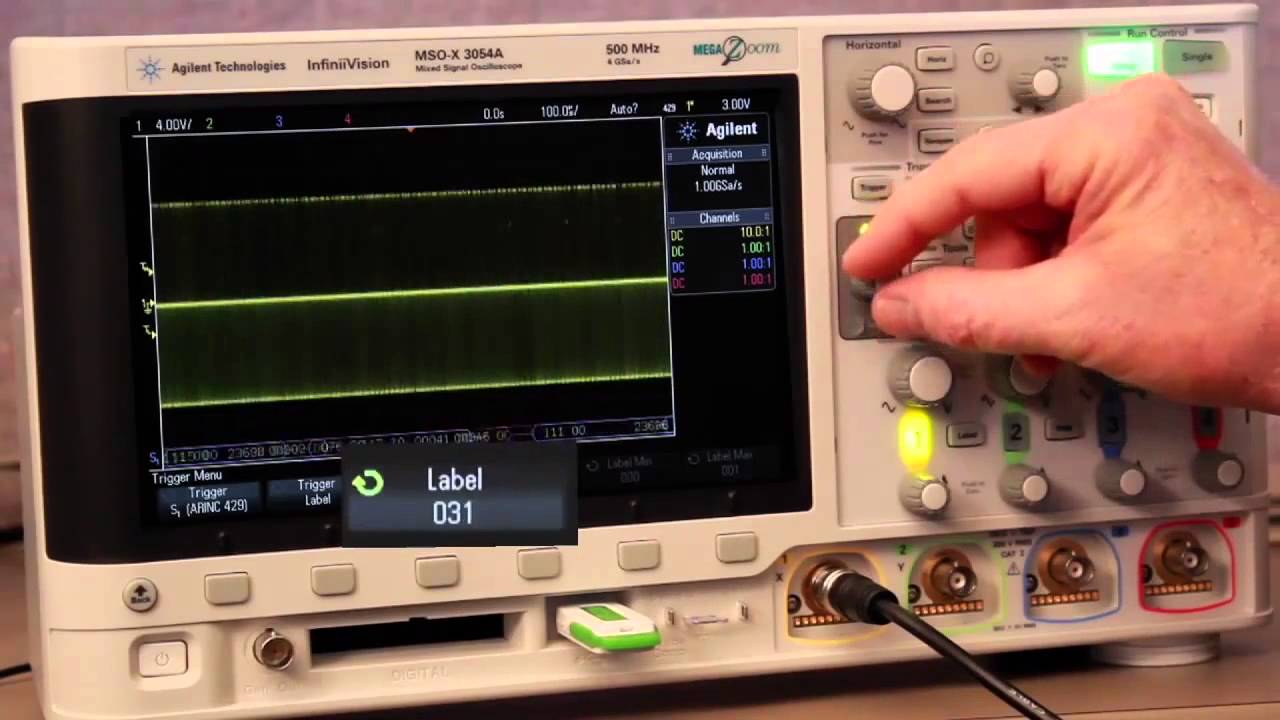This article aims to provide a comprehensive understanding of ARINC-429, its specifications, and its role in avionics communication. ARINC-429 is a widely used data bus standard in the aviation industry, facilitating the exchange of critical information between aircraft systems and avionics equipment. This guide explores the history, architecture, and key features of ARINC-429, highlighting its significance in modern aviation.

Introduction
The aviation industry heavily relies on efficient and reliable communication systems to ensure safe and smooth operations. ARINC-429, developed by Aeronautical Radio, Incorporated (ARINC), is one such standard that has become the backbone of avionics communication. This guide aims to shed light on the technical aspects and applications of ARINC-429.
History of ARINC-429
ARINC-429 was introduced in the late 1970s as a replacement for the outdated ARINC-419 data bus. Its development was driven by the need for a standardized, bi-directional, and lightweight data bus that could handle various types of avionics data. Over the years, ARINC-429 has evolved, with revisions and enhancements to meet the industry’s changing requirements.
ARINC-429 Architecture
ARINC-429 utilizes a point-to-point, unidirectional data bus architecture, where a single transmitter can communicate with up to 20 receivers. The data transmission occurs in a serial, half-duplex manner, with each data word consisting of 32 bits. The architecture supports two types of data formats: binary and discrete. Binary data is used for numeric information, while discrete data represents status or on/off states.

Key Features of ARINC-429
Data Frame Structure: ARINC-429 employs a structured data frame, consisting of a label, a data field, and a parity bit. The label identifies the type of data being transmitted, and the data field carries the actual information. The parity bit ensures data integrity by enabling error detection.
Electrical Characteristics: ARINC-429 operates with a differential voltage signaling scheme, using a twisted pair of wires. The voltage levels represent binary values, ensuring reliable and noise-resistant communication.
Data Rate and Transmission Speed: The standard data rate for ARINC-429 is 100 kbps, although higher-speed versions, such as ARINC-429P2 and ARINC-429P3, offer rates up to 12.5 Mbps. The transmission speed is measured in words per second, with each word consisting of 32 bits.
Label Selection and Assignments: ARINC-429 provides a comprehensive set of labels that define the type and meaning of transmitted data. These labels are standardized across the industry, allowing for interoperability between different avionics systems.
Applications of ARINC-429
ARINC-429 is extensively used in various avionics applications, including flight control systems, engine monitoring, navigation systems, weather radar, and communication systems. It enables the seamless exchange of critical information between different systems, facilitating efficient decision-making and enhancing flight safety.

Advantages and Limitations
Advantages:
Standardization: ARINC-429 offers a widely accepted and standardized communication protocol, ensuring interoperability between different avionics devices and manufacturers.
Reliability: The differential signaling and error detection mechanisms in ARINC-429 make it highly reliable, even in challenging electromagnetic environments.
Simplicity: The straightforward architecture and data frame structure of ARINC-429 simplify implementation and reduce complexity in avionics systems.
Limitations:
Data Rate: The maximum data rate of ARINC-429 (12.5 Mbps) might not be sufficient for certain high-speed applications, such as advanced sensor systems or data-intensive avionics equipment.
Limited Bandwidth: ARINC-429’s single-channel architecture and limited bandwidth can pose constraints when multiple systems need to exchange large amounts of data simultaneously.
Lack of Multicast Capability: ARINC-429 does not support multicast communication, which means that each message is transmitted individually to its intended receivers, potentially increasing the overall communication overhead.
Future Developments and Alternatives
As technology continues to advance, the aviation industry is exploring alternatives and enhancements to ARINC-429. Some of the developments include:
ARINC-629: ARINC-629 is a newer data bus standard designed to address the limitations of ARINC-429. It offers higher data rates, advanced error detection, and a more flexible network architecture, allowing for improved data communication in modern avionics systems.
Ethernet-Based Protocols: Ethernet-based protocols, such as ARINC-664 or AFDX (Avionics Full-Duplex Switched Ethernet), are gaining popularity in the aviation industry. These protocols provide higher bandwidth, increased flexibility, and support for multicast communication, enabling more efficient and scalable data exchange.
Conclusion
ARINC-429 has played a significant role in avionics communication for several decades, offering a reliable and standardized data bus solution. Its structured architecture, simplicity, and widespread adoption have made it a fundamental component in various avionics systems. However, with the increasing demand for higher data rates and advanced communication capabilities, alternative standards and protocols are being developed to address the evolving needs of the aviation industry.
By understanding the key features, applications, advantages, and limitations of ARINC-429, aviation professionals can make informed decisions when selecting communication protocols for their specific requirements. As technology continues to evolve, it is essential to stay updated with the latest advancements and consider alternatives that offer enhanced performance and scalability.
References:
[1] ARINC Specification 429 Part 1, “Mark 33 Digital Information Transfer System (DITS),” Aeronautical Radio, Incorporated, 2012.
[2] ARINC Specification 429 Part 2, “Mark 33 Digital Information Transfer System (DITS),” Aeronautical Radio, Incorporated, 2012.
[3] BendixKing. (n.d.). ARINC 429 Communication Protocol. Retrieved from https://www.bendixking.com/en/products/avionics-navigation-systems/communication/429-communication-protocol
[4] Datatoys. (n.d.). ARINC 429 Tutorial. Retrieved from http://www.datatoys.com/aviation-news/arinc-429-tutorial/
[5] Haggerty, M. (2018). An Introduction to ARINC 429. Aerospace Testing International, Issue 63, 102-105. Retrieved from https://www.aerospacetestinginternational.com/features/connectivity-internet-of-things/an-introduction-to-arinc-429.html





